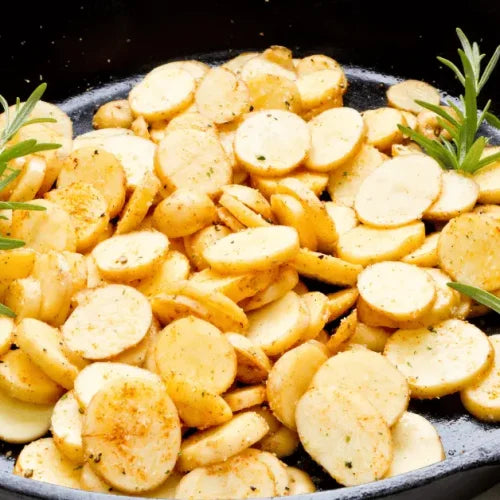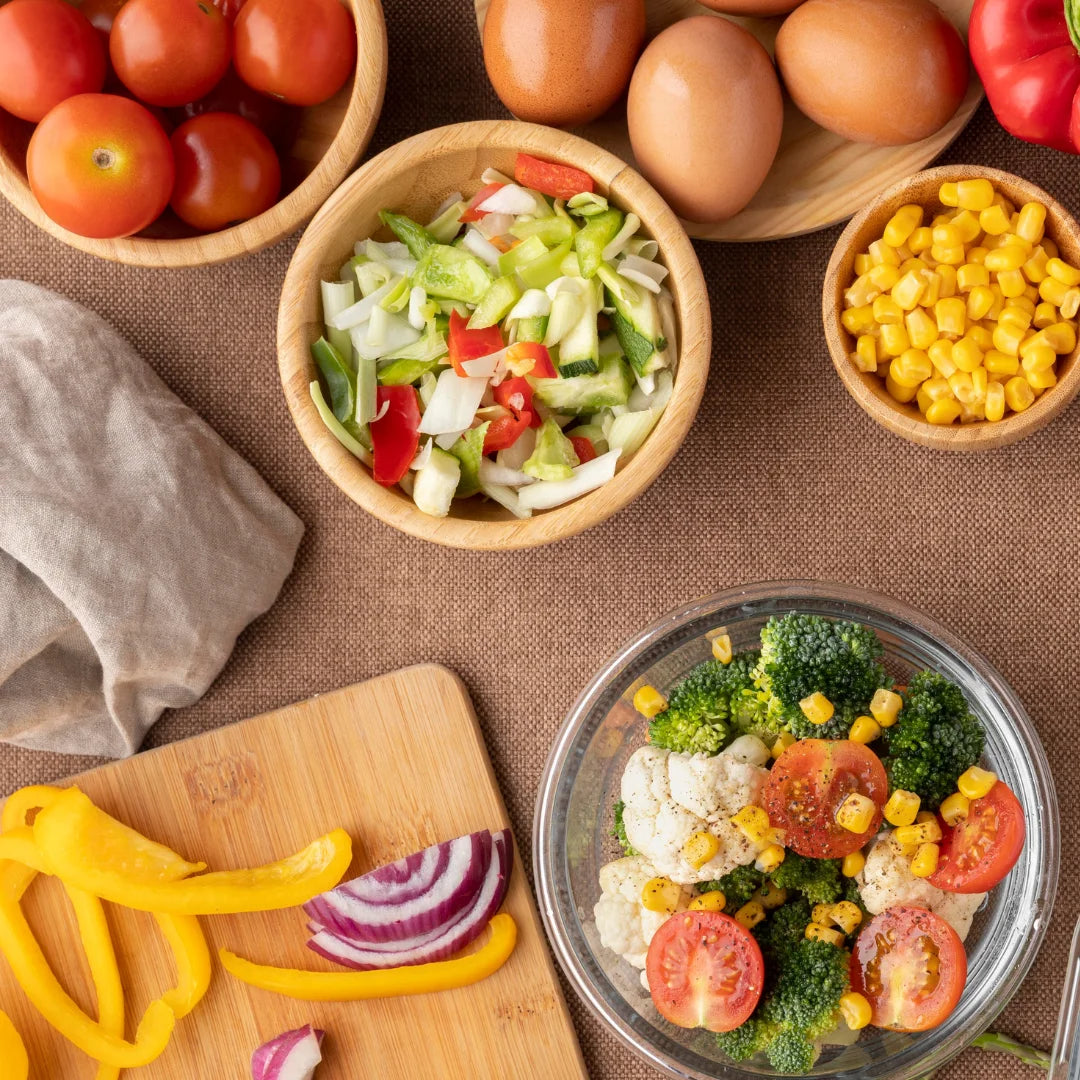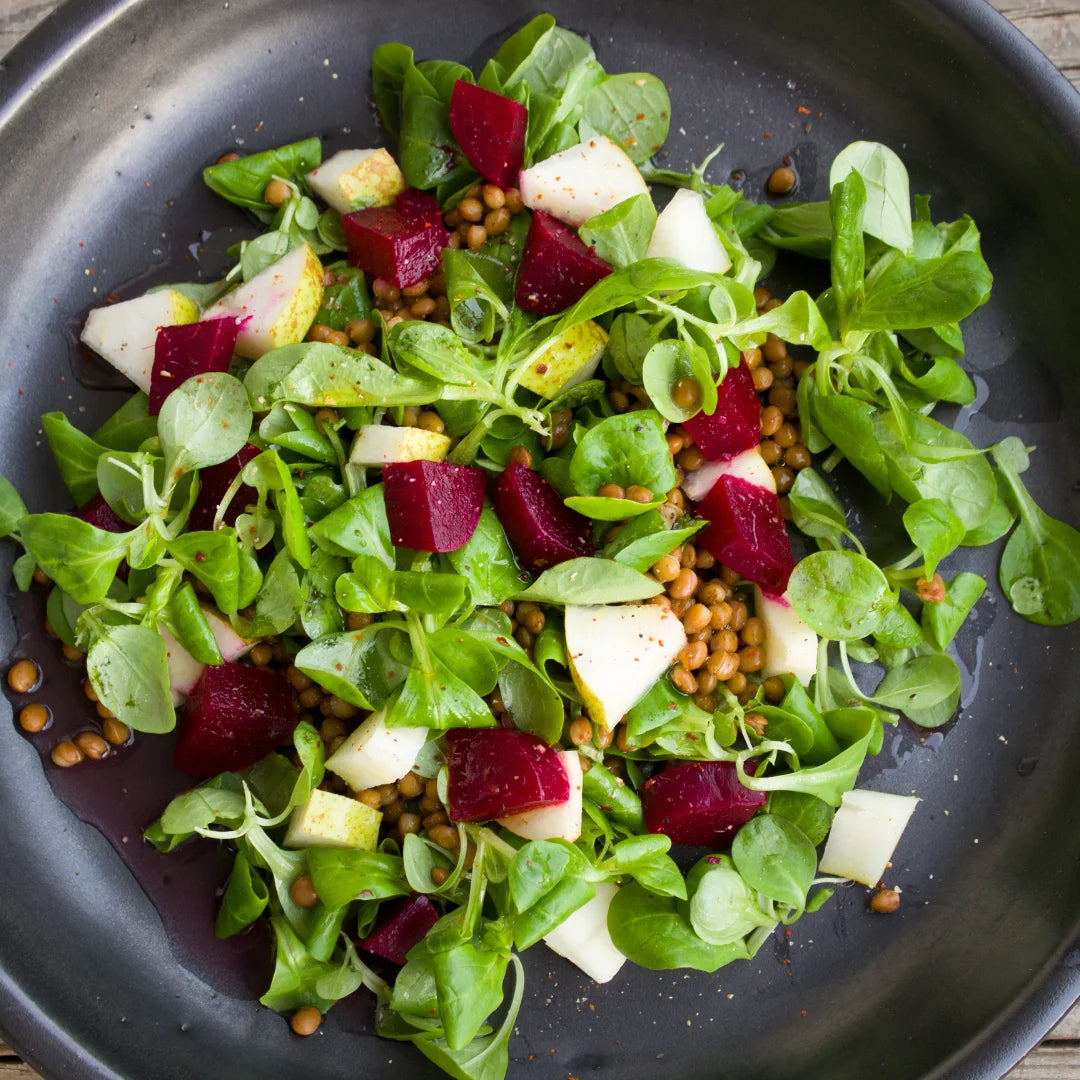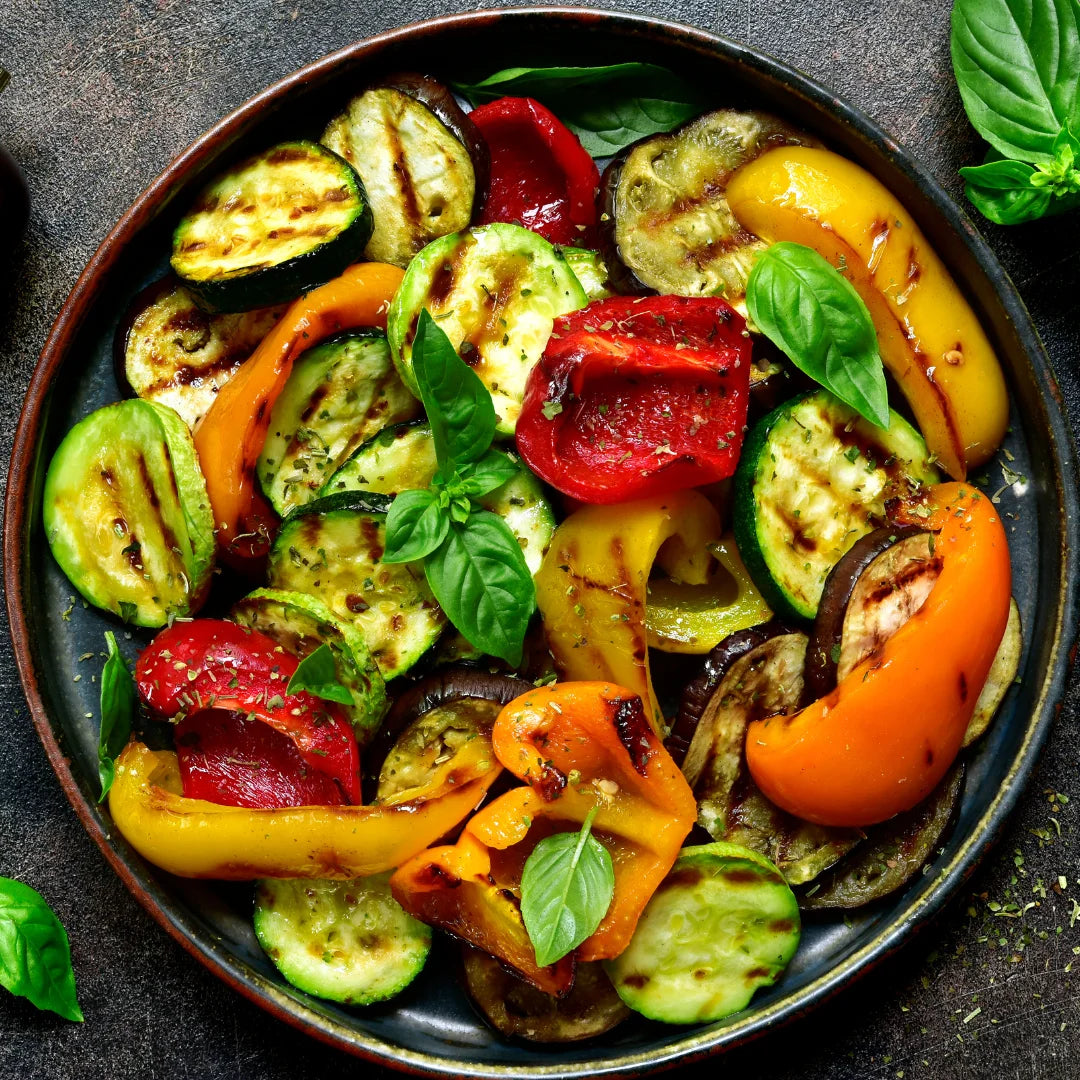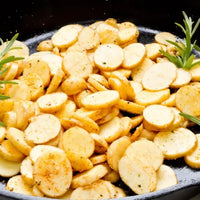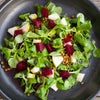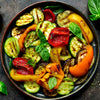Have you ever wondered where the heirloom seeds in your garden come from? Or why some of us strive to keep our food heritage alive by growing certain crops that have been passed down through generations? As we explore the connection between heirloom seeds and food heritage, we’ll discover how these two aspects are intertwined.
The history behind heirloom seeds is fascinating: it often has roots deeply embedded in a family or culture’s past. Not only can they provide insight into how people used to cultivate their land, but many believe that these special varieties of plants offer superior flavour and nutrition compared to those created for mass production. Furthermore, preserving this type of seed helps ensure that future generations will be able to enjoy the same delicious dishes their ancestors once did.
We invite you on a journey to learn more about the story behind heirloom seeds and what they mean to different cultures around the world. Through understanding this connection better, we can work together as one global community towards protecting our collective food heritage so everyone may benefit now and in years to come.
Defining Heirloom Seeds And Food Heritage
Heirloom seeds and food heritage are an integral part of our lives. Over the last decade, there has been a resurgence in consumers’ interest in these two elements: heirloom seed sales tripled from 2013 to 2017. This statistic is indicative of how more and more people are wanting to explore their connection with their past through sustainable agriculture practices that honor traditional farming methods.
The relationship between heirloom seeds and food heritage runs deep. Heirloom seeds represent the collective knowledge, culture, and identity of generations before us; they signify stories handed down over time – tales of resilience, adaptation, and ingenuity as humanity navigates its way through nature’s complexity. Likewise, food heritage embodies memories of family recipes passed on from generation to generation, local culinary traditions formed by resourcefulness during times of scarcity or abundance, and unique dishes crafted to celebrate special occasions.
Together, heirloom seeds and food heritage serve as tangible reminders for why we must continue to maintain cultural continuity within the context of sustainability. They encourage us to think about where our food comes from – who planted it? How was it cultivated? What were the living conditions like when this dish was first created? Our answers provide insight into both our present-day actions as well as actions taken by those who came before us – molding how we interact with each other now as well as how future generations may do so later. With this understanding firmly embedded within our mindsets, let’s take a closer look at the origin of heirloom seeds….
Origin Of Heirloom Seeds
Heirloom seeds have been around for as long as humans have farmed the land. They are, in essence, genetic time capsules: passed down from generation to generation and carefully stored away until needed. Heirlooms represent a shared heritage that has developed over centuries of farming practices – adapting to the environment, experimenting with new varieties, and maintaining knowledge about what works best in specific conditions.
The origin of heirloom seeds is unique depending on their place of origin. For example, Native Americans were known for domesticating wild species such as corn, beans, squash and sunflowers; while Chinese farmers cultivated rice and other grains through hybridization techniques. In Europe, peasant farmers saved seed year after year in order to ensure food security. These three examples demonstrate how diverse cultures relied on different methods of seed saving and plant domestication throughout history – forming an intricate web connecting us all together today.
Here are some key takeaways regarding the origin of heirloom seeds:
- Heirloom seeds are genetic time capsules passed down from one generation to another
- Different cultures employed various strategies for cultivating plants
- Seed-saving was essential for ensuring food security during times of scarcity or abundance
With this background information firmly embedded within our mindsets, let’s explore the advantages associated with growing heirloom varieties….
Advantages Of Growing Heirloom Varieties
As we’ve seen, heirloom seeds are an integral part of our food heritage. But what are the advantages of growing them? There are several benefits to be gained from using heirlooms in your garden or farm.
The first benefit is that they often have better flavour than hybrid varieties. Heirlooms tend to produce fruit and vegetables with a unique taste due to their genetics – something hybrids cannot offer. This makes them ideal for producing delicious meals while also preserving traditional flavours passed down through generations.
Another advantage of heirloom varieties is that they usually require less maintenance than hybrids. Since these plants have adapted over time, they are well-suited for specific conditions and may not need as much attention as newer breeds. This can save you time and energy when it comes to caring for your crops!
Finally, many heirlooms possess greater disease resistance compared to modern hybrids. This means that you won’t have to worry about dealing with pests or diseases as frequently – allowing you more time and effort towards tending other aspects of your garden/farm.
With these advantages in mind, let us now turn our focus on potential challenges associated with growing heirloom varieties….
Challenges In Growing Heirloom Varieties
Growing heirloom varieties can bring many advantages, but it also comes with its own unique set of challenges. From lack of availability to high cost, there are a few obstacles that gardeners and farmers must be aware of when choosing to grow these heritage plants.
To begin with, finding genuine heirloom seeds is not always easy or even possible in some areas. This is because they are often rare and hard to come by due to their low commercial demand compared to modern hybrids. As such, you may have difficulty locating them at your local seed shop or online store – making the process more challenging than expected.
Additionally, purchasing quality heirloom seeds can often be expensive – especially for those on tight budgets. Since the production costs associated with growing heirlooms tend to be higher than other types of crops, this puts a strain on wallets as well as patience! To make matters worse, many vendors charge extra for shipping fees which adds up quickly over time.
All things considered, understanding the potential issues ahead of time will give growers a better chance at success – from selecting appropriate varieties to budgeting accordingly. With proper planning and dedication however, these hurdles can be overcome and delicious harvests enjoyed throughout the year!
Preservation Of Heirloom Seeds
Preserving heirloom seeds is an essential part of protecting our food heritage. Without proper maintenance, these varieties are at risk of disappearing from the public domain – meaning that future generations may not have access to them. Fortunately, there are a few steps gardeners and farmers can take to ensure these plants remain viable for years to come.
First and foremost, growers should be sure to save their own seed by collecting and storing it properly in a cool, dry place. This not only allows you to replant some favourites year after year but also helps conserve biodiversity – something which is paramount in sustaining our agricultural landscape today!
Second, those who find themselves with more than they need should consider donating extra seeds or participating in seed swapping events and groups. Doing so gives others the opportunity to try out new varieties while helping spread awareness about this important cause. Finally, joining forces with your local community could prove beneficial as well; cooperative efforts like communal gardens foster greater collaboration and support between individuals – which ultimately leads to larger-scale preservation projects down the line.
In short, taking action now will help safeguard heirloom seeds for many generations to come – guaranteeing that we all continue enjoying delicious harvests for years ahead! The next step towards preserving plant genetic diversity lies within establishing reliable seed banks throughout the world…
Role Of Seed Banks In Plant Genetic Conservation
Preserving heirloom seeds is an essential step in protecting our food heritage, and one of the most reliable methods for doing so lies within seed banks. These specialised repositories store genetic material from different plant varieties to safeguard them against extinction – while allowing replanting if necessary. To this end, here are four key benefits of utilising these facilities:
First, they provide a safe haven for rare or endangered species; by preserving their genetic makeup, future generations can still enjoy them even if they cannot be grown again in the wild. Second, seed banks help diversify our agricultural landscape; with more options available to farmers and gardeners alike, crop yields become much more sustainable over time. Third, they serve as research centers too – scientists use stored samples to study plant genetics more closely and gain further insight into how best we can utilise them going forward.
Finally, perhaps most importantly of all, seed banks exist as living libraries – offering invaluable access to centuries-old knowledge about cultivation techniques that have been passed down through generations. An excellent example of this is the Svalbard Global Seed Vault based in Norway’s artic circle which houses millions of unique specimens from around the world! It serves as a testament to humanity’s commitment towards maintaining global biodiversity for years ahead.
With such importance being placed on conserving heirloom seeds via seed banks, it comes as no surprise that permaculture has become an increasingly popular approach when it comes to cultivating crops sustainably…
Permaculture And The Use Of Heirloom Seeds
With the preservation of heirloom seeds being so vital to protecting our food heritage, permaculture is becoming an increasingly popular cultivation technique for producing crops sustainably. This practice focuses on creating agricultural systems in harmony with nature, utilising plants and animals that naturally thrive in a given environment – including those grown from heirloom varieties.
By growing these time-honored specimens, we can not only support biodiversity but also learn more about traditional farming methods. Heirlooms are known to be hardier than their commercially available counterparts as they have had generations’ worth of adaptations to local conditions – making them better suited to organic farming practices. Furthermore, this ancient knowledge has been passed down through communities over many centuries, allowing us to preserve important cultural customs too!
Ultimately, when it comes to sustainable agriculture and preserving food heritage both now and into the future, cultivating heirloom seeds via permacultural techniques offers numerous benefits. TIP: Imagine visiting a small farm that’s dedicated to keeping alive the wisdom of past generations—growing old-world vegetables like Cherokee Trail of Tears beans or Arkansas traveling faces peas using all natural processes without any chemical pesticides or fertilisers. It’s easy to see why so many people are turning towards such approaches for safeguarding our planet’s precious resources and honouring its rich history along the way.
Sustainability And Organic Farming With Heirlooms
Organic farming using heirloom seeds is becoming an increasingly popular trend as people seek sustainable, eco-friendly alternatives to produce food. By doing so, we can support biodiversity while also protecting the environment and preserving our cultural heritage. Organic farming practices such as permaculture help us to create a more balanced ecosystem that works in harmony with nature, allowing us to grow crops without relying on synthetic fertilisers or pesticides.
Heirlooms are particularly beneficial for organic farmers because they are hardier than commercially available varieties, making them better suited to natural growing conditions. Plus, their ancient knowledge allows us to maintain important traditional methods of cultivation which may otherwise be lost over time. Growing these old-world vegetables provides an opportunity to honor past generations’ wisdom and safeguard our planet’s resources into the future.
The combination of permacultural techniques and heirloom seeds offers numerous advantages for sustainability and preserving food traditions both now and long term. Not only does it promote a healthy relationship between humans and nature but it also helps keep alive stories from the past – providing invaluable insight into how our ancestors lived and worked with the land around them.
The Impact Of Climate Change On Heirlooms
Unfortunately, with climate change now a reality, heirlooms are at risk of becoming extinct. As temperatures rise and extreme weather events become more common, these old-world varieties may not be able to adapt quickly enough or survive in the changing conditions. This could mean an end to some centuries-old food traditions that have been passed down through generations, as well as a devastating loss for our planet’s biodiversity.
Given this urgent need for adaptation, it is essential that farmers and gardeners work together to find new ways of growing heirloom species sustainably. One key strategy here is crossbreeding – combining two different varieties of plants so they can create hardier offspring that has the best qualities of both parents and is better suited to its environment. Through selective breeding processes like this we can ensure that heirlooms remain viable long into the future while also preserving their unique flavours and cultural significance.
There are already many inspiring stories emerging from organic farmers who are using crossbreeding techniques to protect heirloom crops from extinction due to climate change. By working collaboratively across sectors, we can develop innovative solutions which provide us with healthy produce and help preserve our heritage for years to come.
The Benefits Of Eating Food From Heirloom Varieties
Eating food from heirloom varieties brings with it many potential benefits. Not only is the taste of these traditional crops often more intense and complex than that of their modern counterparts, but they also offer us a connection to our past – a way of preserving cherished food traditions and keeping them alive in the present day. Furthermore, by consuming heirlooms we are supporting biodiversity and helping to ensure that future generations have access to the same delicious flavours enjoyed by our ancestors.
But there’s another reason why eating heirloom produce is so important: nutrition. While hybrid varieties are bred for size or shelf life, heirloom plants tend to be richer in vitamins, minerals, antioxidants and other key nutrients that support good health. Studies have even shown that some old-world fruits and vegetables contain significantly higher levels of phytonutrients than those found in supermarkets today, providing essential protection against disease as well as aiding digestion and boosting energy levels.
In addition to being nutritionally superior, many people believe that heirloom foods simply “taste better” due to their unique flavor profiles which can not be replicated with hybrids. From robust tomatoes bursting with tangy sweetness to sweet potatoes packed full of earthy goodness, enjoying seasonal produce grown from local heirlooms is an experience like no other – one worth protecting for generations to come.
Nutritional Value Of Heirlooms Vs Hybrid Varieties
It is clear that heirloom produce offers many advantages over hybrid varieties, but what about their nutritional value? Recent studies have shown that heirlooms contain significantly more nutrients than modern hybrids, with some fruits and vegetables boasting up to four times the vitamin content. This means that those who opt for locally-grown heirloom foods can be sure they’re getting the most out of their meals nutritionally as well as taste-wise.
Here are just a few examples of how much more nutrient-filled an heirloom variety can be compared to its hybrid counterpart:
- Heirloom tomatoes provide three times more Vitamin A than modern hybrids;
- Heirloom spinach contains twice the amount of folic acid found in hybrid types;
- Heirloom sweet potatoes offer 50% more beta carotene than standard supermarket versions; and
- Heirloom apples boast two or three times greater levels of polyphenols when compared with traditional cultivars.
These findings illustrate why it’s so important for us to preserve our food heritage by eating heirlooms whenever possible – not only does this ensure we get all the vitamins and minerals needed for good health, but also helps keep these special flavours alive for generations to come. With this knowledge at hand, let’s now explore regional cuisines around the world and discover how they use heirloom ingredients to create delicious dishes.
Exploring Regional Cuisines With Heirloom Ingredients
So how do we draw on heirloom ingredients to create delicious, nutritious meals? The answer lies in exploring the world’s various regional cuisines. By taking a closer look at what’s being cooked up in different parts of the globe, we can uncover some truly unique and flavourful dishes that feature heirloom produce as their star ingredient. From vibrant stews full of colourful vegetables to succulent roasts made with heritage cuts of meat, these traditional recipes are sure to tantalise your taste buds while also providing plenty of nourishment.
And it doesn’t stop there – by learning about local culinary customs, we open ourselves up to discovering unique stories from each culture’s food history. This is just one more way that eating heirlooms helps us connect to our past and gain an appreciation for where our meals come from. Plus, when you purchase locally-grown heirloom foods, you’re not only supporting small farmers but also connecting directly with the people behind them and helping preserve their cultural legacy.
By experiencing all these amazing elements of flavour and tradition through our cooking adventures, we become part of something larger than ourselves: a global community united over its shared love of food heritage!
Connecting To Local Communities Through Food Heritage
Nourishing our bodies is not the only thing we can do with heirloom ingredients. We can also use food heritage to nourish our souls and connect us to local communities around the world. By partaking in traditional recipes, we invite a deeper understanding of the people that created them, their values and beliefs, and how these things have been passed down through generations. It’s an incredible way to ensure that cultural legacies are preserved for future generations.
Food traditions from different regions offer so much more than just taste – they provide a window into history and culture while providing valuable insight on how regional produce was used then and now. As we explore all of this richness, even something as simple as growing some heritage crops ourselves can be incredibly rewarding. Not only does it help us take better care of our environment but it also allows us to support small farmers who tend to these special plants. Knowing where your food comes from may even lead you down unexpected paths as you meet new people and discover stories about their lives and connections with food heritage.
In short, engaging with heirloom foods offers many opportunities for growth beyond simply satisfying hunger – both figuratively and literally!
Supporting Small Farmers Who Grow Heritage Crops
Supporting small farmers who grow heritage crops is an important way to ensure the preservation of traditional food knowledge and practices. These growers are often stewards of their local environment, providing vital habitat for pollinators and other species while also protecting endangered varieties of plants that can no longer be found in large-scale agriculture. By choosing to purchase heirloom ingredients from these growers, we create a direct link between ourselves and our agricultural pasts.
At the same time, it’s essential to recognise that many of these producers face serious challenges due to changing weather conditions, soil depletion, and increased competition from larger companies. This is why organizations like Slow Food International have been created – they provide mentorships and resources to help small farms thrive in today’s ever-changing landscape. Additionally, initiatives such as seed banks allow us to access rare varieties of natural produce so that future generations may benefit from them too.
It’s clear that there are tremendous benefits to supporting small farmers who cultivate heritage crops through purchasing power or volunteering efforts. It not only provides us with delicious foods but helps preserve cultural history at the same time!
Education & Awareness Programs For Sustainable Agriculture
As a further step towards preserving food heritage, education and awareness programs for sustainable agriculture are needed. By raising public consciousness about the importance of heirloom seeds and their connection to local cultures, we can encourage people to support small farmers who grow these crops. Additionally, educating consumers on the environmental benefits of growing heritage varieties could help shift attitudes towards ecological farming practices – ultimately leading us closer to a more sustainable future.
In order to achieve these goals, here are three things that should be done:
- Public Outreach Programs: These initiatives aim to increase knowledge about the history and culture behind heirloom seeds through interactive activities such as workshops or field trips. They also provide an opportunity for members of the community to connect with experts in the field while learning how they can contribute positively to local food systems.
- School Education & Training: Incorporating lessons on heirloom seed preservation into existing curriculums would ensure that students get a comprehensive understanding of why it’s important to maintain this traditional agricultural practice. Further training in gardening techniques and ecological farming methods could also be provided so that individuals have the skills necessary for implementing these processes at home or in their communities.
- Social Media Engagement: Utilising online platforms is an effective way to spread information about heirloom seed conservation efforts quickly and easily across large audiences. This type of engagement encourages dialogue between stakeholders from various backgrounds and provides them with resources on where they can find more information or even purchase products grown using these crops.
By taking part in public outreach programs, providing school-level training opportunities, and engaging with social media networks, we can raise awareness around sustainability issues related to heirloom seed preservation while simultaneously supporting small producers who keep our cultural food traditions alive!
Conclusion
In conclusion, the connection between heirloom seeds and food heritage is a strong thread that binds us to our past. It’s an important part of who we are as individuals and communities, but it’s also important for sustainably producing the foods that nourish us. We have the opportunity to preserve these age-old traditions by supporting small farmers who grow heritage crops, engaging in education and awareness programs about sustainable agriculture, exploring regional cuisines with heirloom ingredients, and connecting to local communities through food heritage. By doing so, we can ensure that future generations will reap what we sow—figuratively speaking—for many years to come.


